In today’s competitive job market, crafting a great CV is no longer just about impressing the hiring manager or recruiter. There’s a gatekeeper standing in your way before your CV even lands in human hands: the Applicant Tracking System (ATS). An ATS is designed to scan and rank CVs based on specific keywords, Boolean strings, and other criteria, ensuring only the most relevant CVs make it to the hiring team. So, how do you write a CV that not only appeals to recruiters but also makes it through an ATS successfully? Let’s break it down.
- Tailor Your CV to the Job Description
A one-size-fits-all CV might seem convenient, but it’s not going to help you stand out in a crowded market. Instead, tailor your CV for every job you apply to by carefully studying the job description and using the keywords it contains.
- Identify the right keywords: Look for specific skills, job titles, technologies, and industry-specific jargon that the job description mentions.
- Use those keywords naturally: Incorporate these terms in your CV in a way that feels organic and relevant to your experience. Avoid keyword stuffing; ATS systems have become sophisticated enough to detect it, and recruiters can spot an inauthentic CV a mile away.
- Use Boolean Strings to Your Advantage
Boolean strings are combinations of keywords and operators (such as AND, OR, NOT) that help refine searches. Recruiters often use Boolean strings to narrow down their candidate pool, so your CV needs to be structured in a way that allows for these searches to surface your application.
For example, if the recruiter is looking for a candidate with “Python AND Data Analysis,” your CV should include both of these keywords in close proximity. To ensure you’re covered for different variations, try something like:
- “Experienced in Python scripting for data analysis, visualisation, and reporting.”
This ensures your CV covers both “Python” and “Data Analysis” within the same context, increasing the chances of making it through a Boolean search.
- The Importance of Keyword Repetition
To improve your chances of passing through the ATS filter, it’s essential to repeat key skills and terms throughout your CV without being excessive. Here’s how to do it strategically:
- Use keywords in multiple sections: If a job description emphasises “project management,” make sure this term is not only in your skills section but also in your work experience. For example:
- Skills: “Project Management, Agile Methodologies”
- Experience: “Led multiple project management initiatives to improve operational efficiency.”
- Use synonyms and variations: ATS systems can vary in how they handle keyword searches. Some recognise synonyms, while others may not. For example, “customer support” and “customer service” are often used interchangeably, but some systems might look for one and not the other. Use both variations where applicable.
- Don’t go overboard: Repetition should feel natural. If you force the same phrase into every sentence, both the ATS and recruiters will notice, and it won’t be favourable.
- Be Mindful of Formatting
A well-designed CV can catch the eye of a recruiter, but for an ATS, simple is best. Certain elements can confuse these systems, so it’s essential to avoid:
- Graphics, images, or logos
- Fancy fonts and coloured text
- Complex tables or columns
Stick with a clean, readable format that uses standard fonts like Arial, Calibri, or Times New Roman. Ensure your CV is saved in an ATS-friendly format such as a Word document (.doc or .docx) or a PDF, depending on what the job posting specifies.
- Highlight Measurable Achievements
Hiring managers love to see what kind of impact you’ve had in previous roles. Instead of listing generic duties, focus on measurable achievements. For example:
- Instead of saying, “Managed a team,” say, “Managed a team of 10 engineers, improving project delivery times by 20%.”
- Rather than “Worked on marketing campaigns,” try, “Led marketing campaigns that increased website traffic by 30% in 6 months.”
These specifics not only catch the attention of recruiters but can also boost your chances with an ATS, especially if the job description emphasises results-oriented roles.
- Optimise for Both Humans and Machines
The key to a great CV is striking the right balance between appealing to the recruiter and satisfying the ATS. Here’s how to ensure your CV does both:
- Start with a strong professional summary: The top of your CV should have a concise professional summary that includes critical keywords for the ATS but also reads naturally for a recruiter.
Example: “Dynamic marketing professional with 5+ years of experience in digital campaigns, SEO optimisation, and content strategy. Proven track record of increasing web traffic by 30% through targeted initiatives.”
- Use bullet points: Bullet points make it easier for both the ATS and human readers to scan your CV quickly. Use action-oriented language (e.g., “Developed,” “Led,” “Managed”) to start each bullet point.
- Don’t forget soft skills: While hard skills like software knowledge or technical expertise are vital for ATS systems, don’t underestimate the power of soft skills like “team leadership” and “communication.” Many job descriptions will list these, and the ATS will be scanning for them.
- Test Your CV with ATS Scanning Tools
Once you’ve optimised your CV for both ATS and human readers, it’s a good idea to test it to ensure it passes through ATS filters. There are excellent online tools available that simulate how an ATS will process your CV. Two of the top tools for this purpose are Jobscan and ResumeWorded.
- Jobscan: Jobscan is a powerful tool that allows you to upload your CV and compare it against a specific job description. It provides an overall match rate and highlights missing keywords, formatting issues, and areas that can be optimised to align better with ATS systems. It’s highly valuable for tailoring your CV to different job postings and improving your chances of making it through ATS filters.
- ResumeWorded: ResumeWorded provides a free ATS-friendly score and detailed feedback to help you improve your CV for both ATS and recruiters. It focuses on keywords, formatting, and structure, ensuring that your CV is optimised for ATS compatibility while still being appealing to human eyes. This tool is user-friendly and provides actionable tips to boost your CV’s effectiveness.
- Leverage Professional Outplacement Support
Some recruiters and companies have developed tailored outplacement services to support individuals in their job search after leaving a role. These services often include personalised CV updates, tips for optimising job board visibility, and LinkedIn profile creation. They are designed to help candidates quickly get back into the workforce by enhancing their job market presence and improving their chances of being noticed by recruiters.
This is also a service that Remarkable Jobs offers, and it has been highly successful in helping individuals land new roles. Our outplacement support not only optimises your CV to ensure you are top-ranked on job boards, but we also create and fine-tune your LinkedIn profile, ensuring it stands out in a competitive job market. Remarkable Jobs has proudly achieved a 100% candidate success rate, with leavers securing new positions within just two months.
By leveraging these professional services, you can give yourself an edge in the job market, making your transition to a new role smoother and faster.
Final Thoughts
Creating a CV that shines in today’s job market requires attention to detail, keyword strategy, and understanding how ATS systems work. By focusing on tailoring your content, using Boolean logic to your advantage, and ensuring that your formatting is ATS-friendly, you’ll have a better chance of getting your CV noticed—not just by a machine, but by the human hiring manager as well. With tools like ‘Jobscan’ and ‘ResumeWorded’, and professional outplacement services like those offered by Remarkable Jobs, you can take the guesswork out of the process and make sure your CV is truly ATS-optimised.
Good luck, and happy job hunting!






